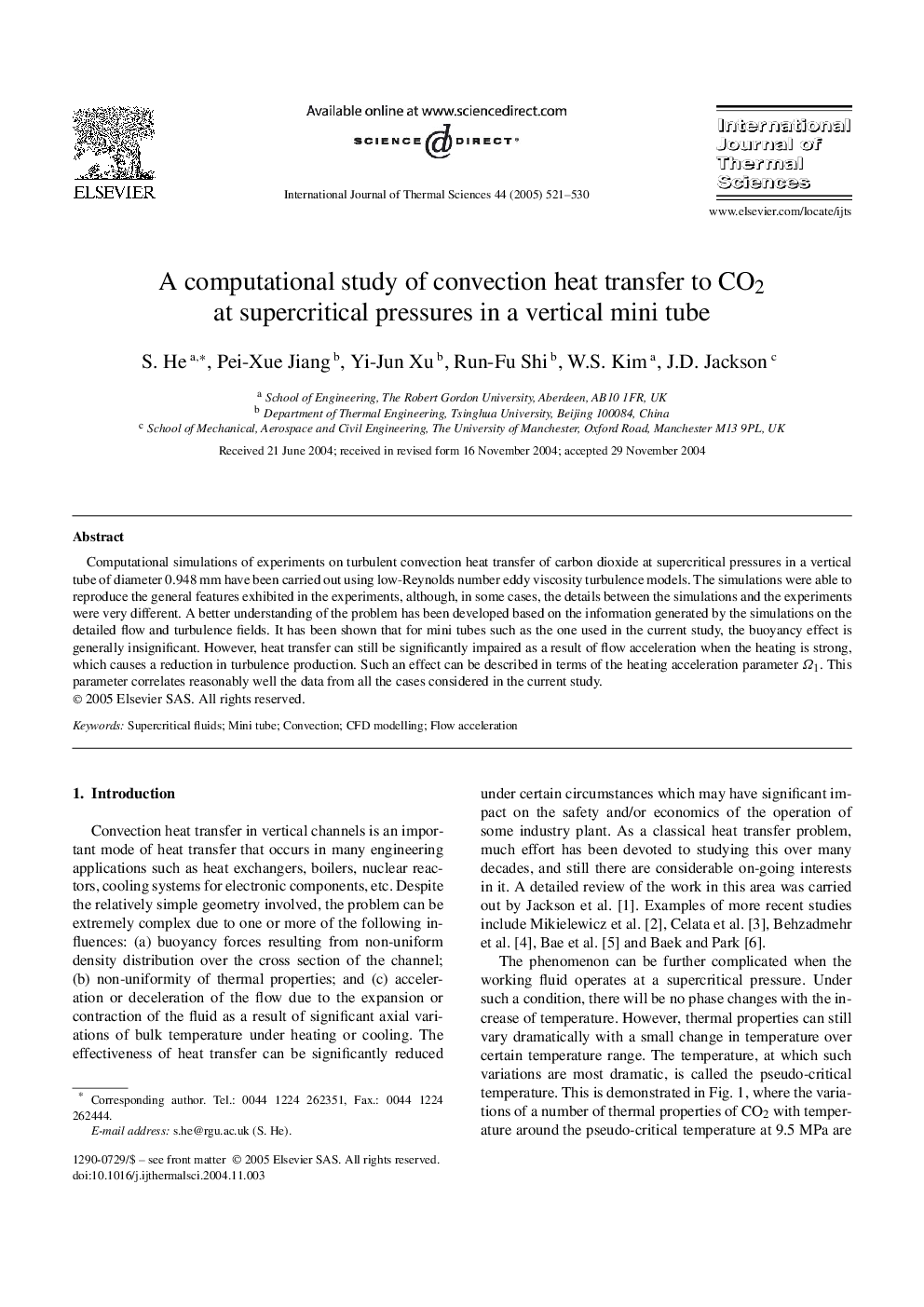| Article ID | Journal | Published Year | Pages | File Type |
|---|---|---|---|---|
| 9692865 | International Journal of Thermal Sciences | 2005 | 10 Pages |
Abstract
Computational simulations of experiments on turbulent convection heat transfer of carbon dioxide at supercritical pressures in a vertical tube of diameter 0.948 mm have been carried out using low-Reynolds number eddy viscosity turbulence models. The simulations were able to reproduce the general features exhibited in the experiments, although, in some cases, the details between the simulations and the experiments were very different. A better understanding of the problem has been developed based on the information generated by the simulations on the detailed flow and turbulence fields. It has been shown that for mini tubes such as the one used in the current study, the buoyancy effect is generally insignificant. However, heat transfer can still be significantly impaired as a result of flow acceleration when the heating is strong, which causes a reduction in turbulence production. Such an effect can be described in terms of the heating acceleration parameter Ω1. This parameter correlates reasonably well the data from all the cases considered in the current study.
Related Topics
Physical Sciences and Engineering
Chemical Engineering
Fluid Flow and Transfer Processes
Authors
S. He, Pei-Xue Jiang, Yi-Jun Xu, Run-Fu Shi, W.S. Kim, J.D. Jackson,
